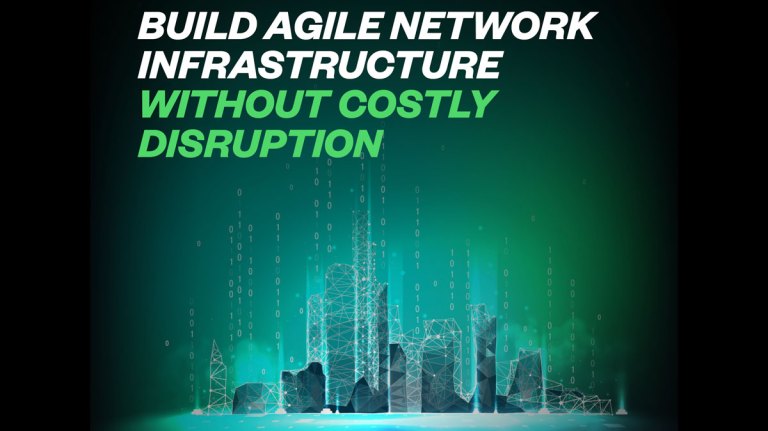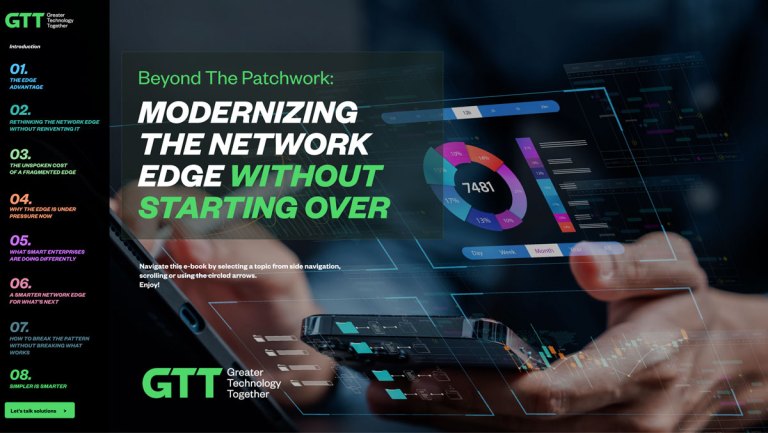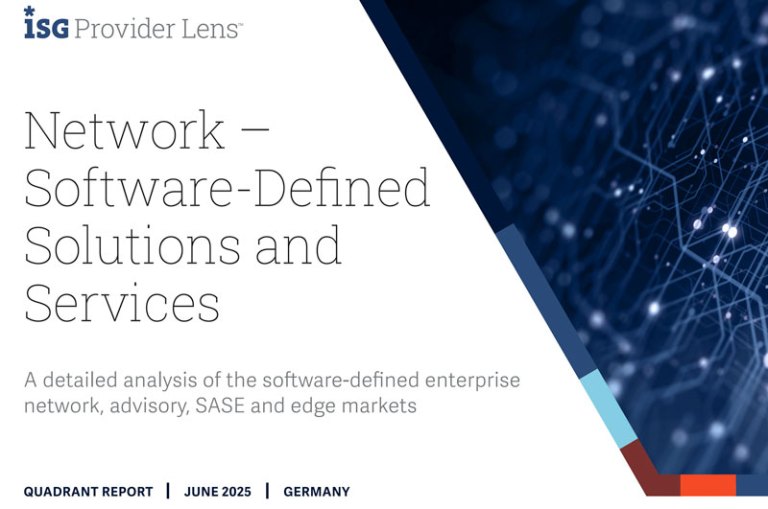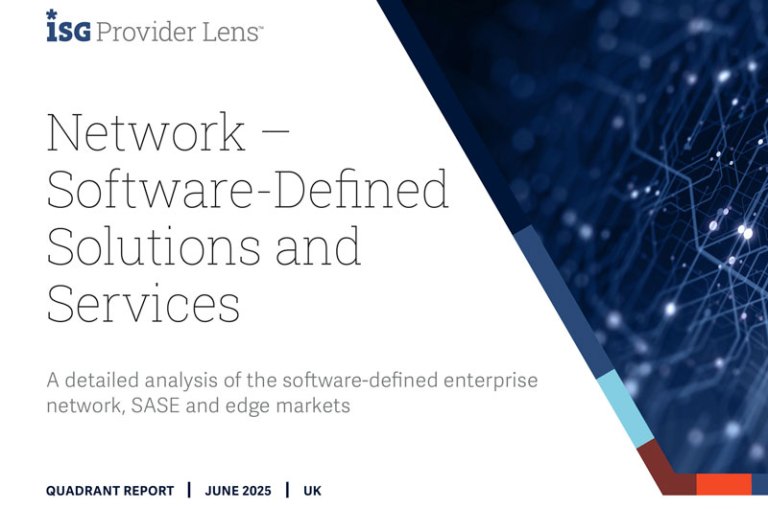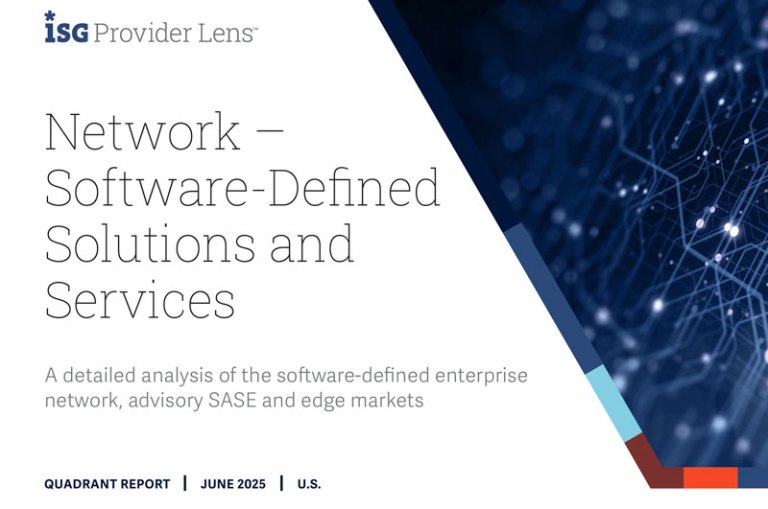Cybersecurity is evolving fast. As threats grow more sophisticated and distributed, so do the tools enterprises need to defend their networks. Traditional solutions, like on-premises firewalls and Security Information and Event Management (SIEM) systems, continue to play a key role. But to stay ahead, organizations are also embracing more dynamic, cloud-delivered solutions like Network Security as a Service (NSaaS).
At GTT, we offer both approaches. That’s because there’s no one-size-fits-all answer since every enterprise has unique security, compliance, and operational needs. This blog explores how both models complement each other to help you simplify operations, scale with confidence, and stay secure.
What is NSaaS?
Network Security as a Service (NSaaS) is a cloud-delivered security framework that provides organizations with on-demand protection across distributed environments. NSaaS gives you agility, automation, and scalability, all while supporting operational expenditure (OpEx) models. With adaptive billing and centralized control, it’s an ideal option for managing security across remote users, cloud apps, and hybrid IT environments.
Rather than replacing traditional tools, NSaaS integrates with them, providing visibility, orchestration, and faster response through platforms like GTT.
Key Features of NSaaS
NSaaS offers unique features that enable it to stand out from traditional security models. These include:
- Cloud-Based Delivery: Security services are delivered over the cloud, eliminating the need for dedicated on-premises infrastructure and facilitating real-time data protection, faster updates, and easier access to new security features.
- Scalability: NSaaS is inherently scalable, which means an organization’s security capabilities and resources can expand as it grows, even without any physical upgrades.
- Centralized Management: NSaaS provides a unified dashboard for simplified control and visibility. From the central platform, administrators can monitor threats, update policies, and manage security settings across the entire organization.
- Flexibility and Agility: NSaaS adapts quickly to new security threats and changing network environments. With instant updates and the flexibility to address new vulnerabilities, it helps organizations stay ahead of the evolving cyber risks.
Benefits of NSaaS
The big question for your organization is simple: Why should businesses pivot to NSaaS instead of sticking with what’s worked in the past? While it won’t be right in every case, there are notable benefits to consider. Here are the main advantages of NSaaS for businesses with modern IT environments:
- Cost-Effectiveness: NSaaS leverages a subscription business model, so organizations don’t have to pay high upfront costs to access security services or ongoing maintenance expenses.
- Accessibility: The cloud-based nature of NSaaS makes management easy, rendering the security solution perfect for organizations with distributed or remote teams.
- Automatic Updates: NSaaS providers deliver automatic updates to protect users against threats, save IT teams time, and ensure security systems are always up-to-date.
- Outsourcing Expertise: NSaaS allows small to medium-sized enterprises (SMEs) to access advanced cybersecurity services without necessarily maintaining full in-house teams, promoting the efficient use of resources.
These benefits make NSaaS a great option for enterprises looking to modernize their security approach. Doing so enhances adaptability, efficiency, and protection against cyber threats.
Potential Limitations of NSaaS
Naturally, we are big proponents of NSaaS and other modern solutions, but we acknowledge no approach is perfect. Despite NSaaS’s benefits, the security model comes with potential limitations, such as:
- Network Dependence: Because NSaaS is cloud-delivered, connectivity plays a key role in accessing services. Most enterprises already rely on the internet for business operations. With GTT, you gain the added assurance of global, resilient internet services and built-in failover to keep your security services available when it matters most.
- Customization Needs: Some organizations with highly specialized environments may need advanced configuration beyond what certain NSaaS platforms support. GTT helps customers design flexible solutions that integrate with existing infrastructure and meet unique business requirements.
- Security Controls and Data Privacy: NSaaS does not mean giving up control. With GTT, you retain visibility and decision-making over your data and policies. Our GTT Envision platform empowers your teams to manage security functions directly, with controls in place to meet strict privacy and compliance standards.
Businesses can address many of these challenges by selecting a reputable NSaaS provider like GTT while leveraging the model’s benefits.
What are Traditional Security Solutions?
For many enterprises, traditional security tools remain a vital part of their network strategy. These solutions are typically deployed on-site, offering high levels of control, customization, and direct oversight. GTT provides both traditional and cloud-based services because each customer’s needs are different. The right approach depends on your operational environment, compliance requirements, and the way your business is structured.
Traditional models are often a great fit for organizations that have invested in on-premises infrastructure or need tailored control due to regulatory, technical, or business needs. Rather than being a legacy approach, these tools continue to play an essential role in securing enterprise networks.
Key Features of Traditional Security Solutions
So, what separates traditional approaches from the NSaaS model? Traditional security solutions offer the following distinct features:
- On-Premises Hardware and Software: Traditional security systems are built on physical devices like firewalls and routers installed and managed on-site.
- Direct Control: The solutions allow companies to manage their security environments, which means IT teams can implement various security policies, adjust configurations as needed and promptly respond to on-site security issues.
- High Customization: Traditional security solutions offer unmatched flexibility, which allows businesses to tailor them to their infrastructure.
With these features, traditional security solutions are well-suited to companies seeking a highly customizable security environment that they can control.
Benefits of Traditional Security Solutions
The threat landscape is dynamic and constantly evolving. Staying ahead requires a mix of traditional and modern security approaches. For many organizations, traditional security solutions continue to provide valuable benefits, especially when integrated with newer technologies as part of a broader strategy.
Here are a few key advantages of traditional models:
- Customizability: Traditional cybersecurity systems allow companies to customize their security strategies down to the smallest detail, ensuring their systems meet their unique operational needs.
- Complete Control Over Data: With a traditional security solution, your organization can retain control over its data and infrastructure. The direct oversight makes it much easier to manage data flows, user access, and system adjustments in-house, which is essential to adhering to relevant compliance protocols.
- No Dependency on Cloud Services: By operating independently from the cloud, traditional security models sidestep the potential disruptions associated with reliance on the internet. As a result, they offer more stability and reliability for businesses that need access to their security systems 24/7.
Still, even with these advantages, you need to consider the disadvantages of traditional security systems before adopting them.
Potential Limitations of Traditional Security Solutions
Like everything, there are limitations to traditional security solutions to consider. These include:
- High Upfront Costs: The initial cost of implementing traditional security systems can be quite high. From investing in the required hardware and software to managing ongoing maintenance expenses, business owners may part with a significant amount of money to capitalize on the solutions, making them inconvenient for those with limited budgets.
- Maintenance and Management Burden: Traditional security solutions require a dedicated and skilled in-house team to handle configurations, regular updates and troubleshooting. The responsibility adds to the operational workload, as teams must remain vigilant, apply patches, monitor threats, and ensure systems function smoothly.
- Scalability Challenges: As organizations grow, scaling traditional infrastructure becomes more expensive and time-consuming. They typically must invest in new equipment and installations for each upgrade and adjust their network architecture.
Sure, traditional security solutions offer stability and control. However, their high installation costs, management demands, and limited scalability may not always align with the needs of all organizations. For new and growing organizations, NSaaS might be the best approach.
Key Differences Between NSaaS and Traditional Security Solutions
Understanding the differences between NSaaS and traditional security systems is essential in determining which option fits your organization’s security needs. Below is a side-by-side comparison of these two solutions and an overview of their distinguishing features.
| Feature | NSaaS | Traditional Security Solutions |
| Deployment | Cloud-based and managed by the provider | On-premises and managed by in-house teams |
| Cost Structure | Subscription-based, which makes predicting expenses possible | High upfront costs and ongoing maintenance fees are required |
| Scalability and Flexibility | Highly scalable and flexible, which enables it to adjust to business needs | Usually limited by hardware capacity and requires regular upgrades |
| Control | Offers a centralized dashboard to simplify control and management | Provides multiple systems and interfaces to manage |
Deployment and Infrastructure
NSaaS operates in the cloud, which allows for rapid deployment and smooth integration with other cloud applications. The burden on internal teams is less since providers are responsible for maintenance and updates, and there’s no need for physical hardware on-site.
On the other hand, traditional security solutions rely on physical hardware, so the deployment process can be more complicated and time-consuming than NSaaS. Again, these systems are maintained and managed by in-house IT teams, which demands more resources.
Cost Structure
NSaaS leverages a subscription-based model that requires organizations to pay regular fees (monthly or annually) for services without incurring large upfront costs. The security solution’s cost-effective structure makes it appealing to small and medium-sized businesses lacking adequate funds for security investments.
Conversely, business owners must invest in hardware, software, and installation to benefit from traditional security systems. Although they offer long-term cost benefits through ownership, raising the initial capital can be challenging for smaller organizations.
Scalability and Flexibility
NSaaS solutions are scalable and can comfortably meet changing business needs, such as an increase in users. In addition, these services can be adjusted without requiring major infrastructure changes, making them suitable for dynamic or fast-growing organizations.
However, scaling is trickier and more expensive with traditional security solutions because they often require additional hardware purchases and system reconfiguration. Therefore, expanding traditional security infrastructure may become a financial burden for a business anticipating growth in the future.
Security and Control
With NSaaS, the service provider manages security settings, data storage, and access controls, ensuring reliable protection against threats. However, the model limits direct control for customers, which may be a concern for organizations with strict regulatory compliance needs.
That’s not the case with traditional security solutions, however. Because organizations remain in charge of their security configurations and access policies, they can tailor their security protocols however they want. But then, they must have an in-house IT team to ensure things are done right.
Which Solution is Right for Your Enterprise?
This is the big question. And there is no universal answer — you need to select the best option for your business. To choose between NSaaS and traditional security solutions, consider these factors:
- Company Size: If your company is a small organization or startup, you may benefit from the flexibility and cost-effectiveness of NSaaS. However, large enterprises might have adequate resources to acquire in-house security infrastructure for traditional security options.
- Industry Requirements: Industries like healthcare, finance, and government often face strict regulatory requirements, favoring traditional security solutions because of their control benefits.
- Security Needs: Companies with highly specialized security requirements may need to customize their solutions, which is easier to achieve with traditional solutions.
- Budget: Due to its subscription-based business model, NSaaS may be attractive to businesses with limited upfront budgets. Those with larger capital expenditures can invest in traditional infrastructure that could be cost-effective over time.
There are other factors to consider before selecting a security solution for your enterprise. For instance, if you opt for NSaaS, you must partner with reputable providers to enjoy reliable network security services.
Use Cases for NSaaS
NSaaS is ideal for organizations that need flexibility, centralized control, and the ability to scale security quickly. Below are common enterprise scenarios where NSaaS delivers the most value:
- Distributed enterprises with multiple locations: NSaaS simplifies security across branches, remote users, and cloud applications through centralized, cloud-based management and consistent policy enforcement.
- Rapidly growing or scaling companies: As organizations expand, NSaaS enables quick provisioning of secure access for new users and sites without needing to overhaul existing infrastructure.
- Small to mid-sized businesses (SMBs): In select cases, NSaaS gives SMBs access to advanced protections with predictable costs and reduced reliance on in-house resources.
Other industries also benefit from NSaaS. E-commerce companies, for example, can scale protections during seasonal traffic surges, while educational institutions can efficiently secure hybrid learning environments.
Use Cases for Traditional Security Solutions
Here are instances and industries where traditional security models can be advantageous:
- Industries with Stringent Compliance Needs: Organizations in sectors like healthcare, finance, or government often require precise control over data and policy enforcement. Traditional security solutions can support these needs, particularly when paired with private cloud environments. That said, security as a service can also meet strict compliance requirements when delivered with robust controls and visibility. The right approach depends on how much direct oversight and infrastructure ownership your business needs.
- Highly Customized Security Requirements: Companies with specialized security needs may prefer traditional solutions to NSaaS because of their high customizability.
- Large Enterprises with In-house Expertise: Traditional infrastructure can benefit organizations with a dedicated IT team and a large security budget.
- Businesses Preferring On-Premises Control: Traditional security systems are convenient for companies that want physical control over their data and systems.
Traditional security solutions might be a better fit for industries and enterprises with complex security needs and specific regulatory requirements.
Taking the Next Step Toward Securing Your Enterprise Network
As you evaluate reliable and secure networking options, explore the full range of tailored cybersecurity solutions we offer at GTT. We provide a full suite of cybersecurity solutions, including Managed SD-WAN, DDoS Mitigation, and SASE, which can be handy for streamlined network management, protection against cyber threats, and creating a unified, secure network experience.
Ready to take the next step in securing your enterprise network? Talk to our experts today and discover how GTT can help you build a resilient, future-proof network.




